







CHALLENGING CONVENTIONS
Looking ahead to Kurt Weill’s 125th Birthday in 2025
BORN IN WAVES
Estonian Composer
Elis Hallik Joins Schott
Explore our New Resource for Orchestral Programming

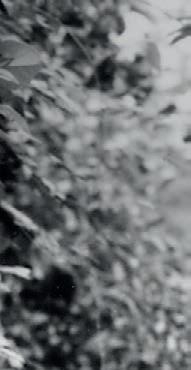


Dear Reader,
Kurt Weill (1900–1950) dedicated his life to the creation of new music theater. Th is commitment played out in different ways depending upon the culture in which he worked, from the theaters and opera houses of Weimar Germany to Broadway stages in New York City. Certain common threads tied together all parts of his career: a concern for social justice, an aggressive pursuit of highly-regarded playwrights and lyricists as collaborators, and an inspired interest in developing hybrid genres of elegance and power. The entirety of Weill’s œuvre has experienced a significant renaissance since his death, and especially so since his centenary in 2000. A major publishing project, the Kurt Weill Edition, each year makes more of his music available in fi rst-class critical editions. Soon to appear, for instance, is a volume dedicated to his symphonic music. With 2025 representing both the 125th anniversary of his birth and the 75th of his death, his music is poised only to grow in significance in the coming years. In this issue, the Schott team expresses their enthusiasm for favorites among his works.
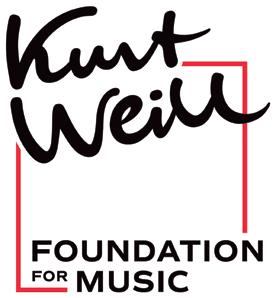
Kurt Weill (1900–1950) arbeitete sein ganzes Leben daran, ein neues Musiktheater zu schaffen. Je nach Kulturkreis, in dem er tätig war – von den Theatern und Opernhäusern der Weimarer Republik bis zu den BroadwayBühnen in New York City –, kam dieses Engagement auf unterschiedliche Weise zum Ausdruck. Alle Abschnitte seiner Karriere haben eines gemeinsam: sein Engagement für soziale Gerechtigkeit, sein insistierendes Streben mit hoch angesehenen Dichterpersönlichkeiten zusammenzuarbeiten und sein inspiriertes Interesse an der Entwicklung hybrider Genres von Eleganz und Kraft . Das Gesamtwerk Weills hat nach seinem Tod und insbesondere seit seinem 100. Geburtstag im Jahr 2000 eine bedeutende Renaissance erlebt. Ein großes Verlagsprojekt, die Kurt Weill Edition, macht Jahr um Jahr mehr seiner Musik in erstklassigen kritischen Editionen zugänglich. Demnächst erscheint zum Beispiel ein Band, der sich Weills symphonischer Musik widmet. Im Jahr 2025 feiern wir Weills 125. Geburtstag und seinen 75. Todestag zugleich. Durch das Jubiläum wird seine Musik noch an Bedeutung gewinnen. In dieser Ausgabe bringt das Schott-Team seine Begeisterung für Lieblingswerke zum Ausdruck.
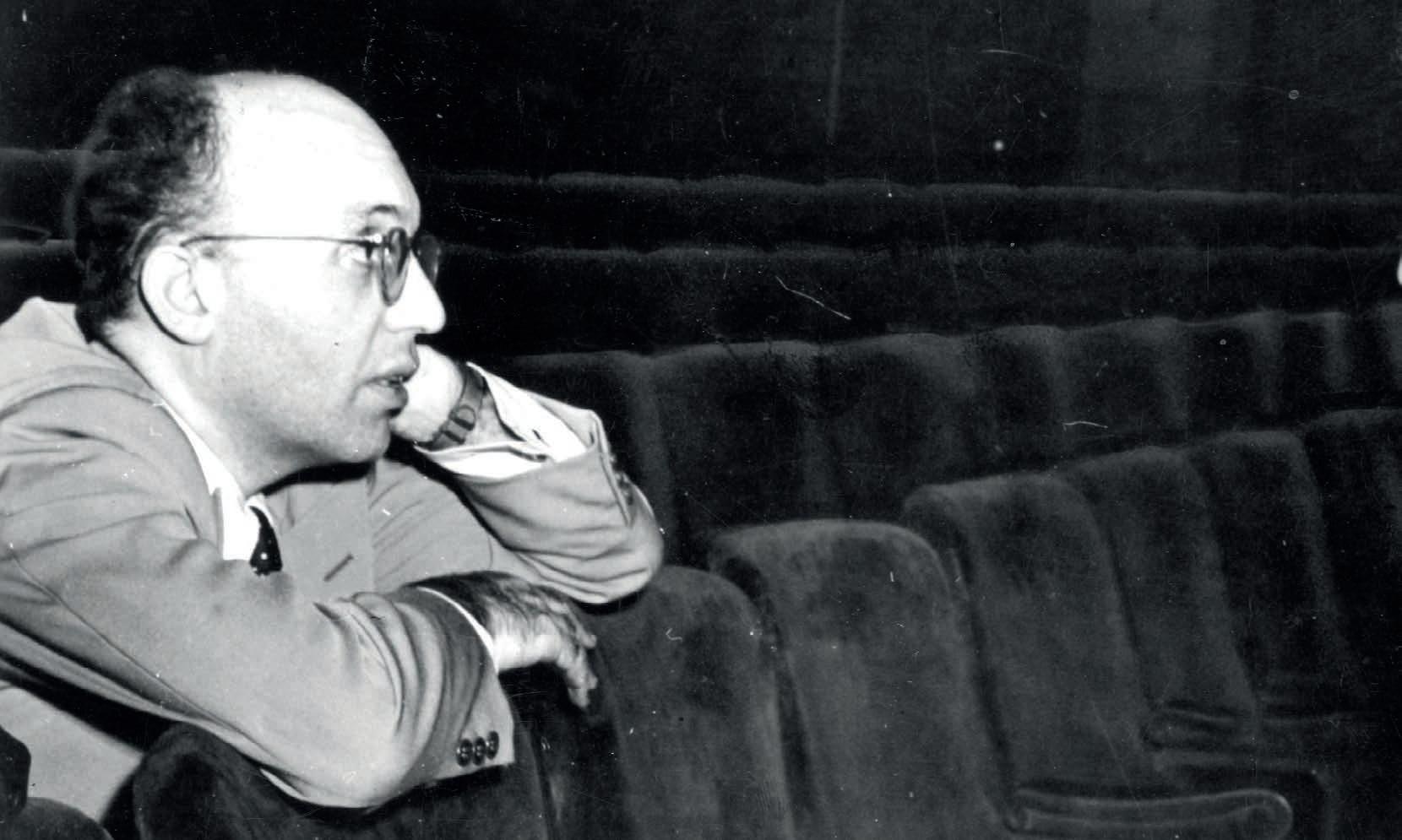
Schott Mainz | Philipp Weber Symphonie in einem Satz Symphony no. 1 – „Berliner Sinfonie“ (1921) Kritische Ausgabe von James Holmes (Kurt Weill Edition, Series II, Volume 3) 25’
Schott Music distribution rights: worldwide
2 (2. auch Picc.) · 1 · 2 (2. auch Bassklar.) · 22 · 1 · 1 · 0 - P. S. (3 Spieler) - Str.

I am particularly an aficionado of early works by 20 th century composers in which a predominantly youthful energy is reflected within a field of tension between tradition and avant garde and between the influences of musical models and the budding of a young and highly personal musical language. All of this is captured in exemplary fashion by Weill’s symphony, composed in Berlin, when he was a twenty-one-year-old student of Ferruccio Busoni. Unexpected changes of mood, rugged instrumentation and expressionistic emotions repeatedly break through the late Romantic idiom. Weill took his inspiration for the work from Johannes R. Becher’s dramatic poem Arbeiter, Bauern, Soldaten. Der Aufbruch eines Volkes zu Gott (1919) which is characterised by the horrors of war and social-utopian concepts. The long lost symphony was given its fi rst performance only in 1958. A new critical edition is now available for rental and will soon be published in the Kurt Weill Edition, more than a century after its composition.
Frühwerke von Komponisten des 20. Jahrhundert fi nde ich persönlich besonders aufregend. Hier zeigt sich meist jugendliche Energie in einem Spannungsfeld zwischen Tradition und Avantgarde, zwischen den Einflüssen der musikalischen Vorbilder und dem Aufkeimen einer jungen, ureigenen Klangsprache. Dies alles fängt Weills Symphonie exemplarisch ein, die der 21-jährige Schüler von Ferruccio Busoni in Berlin komponierte. Unvermittelte Stimmungsumschwünge, schroffe Instrumentation und expressionistischer Ausdruck durchbrechen das spätromantische Idiom immer wieder. Als Inspiration diente Weill Johannes R. Bechers Festspiel Arbeiter, Bauern, Soldaten. Der Aufb ruch eines Volkes zu Gott (1919), das von Kriegsschrecken und sozial-
utopischen Gedanken geprägt ist. Die lange verschollene Symphonie wurde erst 1958 uraufgeführt. Gut 100 Jahre nach ihrer Entstehung wird eine neue kritische Ausgabe im Rahmen der Kurt Weill Edition veröffentlicht. Das dazugehörige Aufführungsmaterial ist bereits jetzt erhältlich.
Schott New York | Lauren Ishida
Zaubernacht
(Magic Night)
Kinderpantomime (Children’s Pantomime) (1922)
for soprano and chamber orchestra scenario by Wladimir Boritsch and Kurt Weill based on the text of the critically edited full score (Kurt Weill Edition, Series I, Volume 0), edited by Elmar Juchem and Andrew Kuster (dt.)
50’
Kurt Weill Music distribution rights worldwide: European American Music Distributors Company – Schott Music
1(pic).0.0.1-0.0.0.0-1(or 2)perc-pnostr(1.1.1.1.1)
also available: Kleine Zaubernachtmusik Suite aus „Zaubernacht“ für Kammerensemble Konzipiert und herausgegeben von John Baxindine (2018) 21’
1 · 0 · 0 · 1 - 0 · 0 · 0 · 0 - P. · S. - Klav. - Str. (1 · 1 · 1 · 1 · 1)

As its name suggests, Kurt Weill’s Zaubernacht is indeed a magical piece of music theater. Premiered to positive reviews in Berlin in 1922, this ballet pantomime
was Weill’s fi rst work to be performed in the US when it appeared in New York in 1925 with choreography by the acclaimed Japanese dancer Michio Ito. Popular due to its light, attractive score and charming story (two children are transported to a land of enchantment by a fairy as they sleep), the original score of Zaubernacht was left behind when Weill fled Germany in 1933. The material was not rediscovered until 2005, when Yale University found a complete set of original instrumental parts (donated by the widow of Zaubernacht’s New York director, Wladimir Boritsch) in the basement of the Sterling Memorial Library.
Wie der Name suggeriert, ist Kurt Weills Zaubernacht ein magisches Stück Musiktheater. Die 1922 in Berlin uraufgeführte Kinderpantomime erhielt positive Kritiken und war das erste Stück Weills, das in den USA aufgeführt wurde: 1925 in New York mit einer Choreografie des gefeierten japanischen Tänzers Michio Ito. Zaubernacht erfreute sich wegen seiner leichten, attraktiven Musik und der bezaubernden Geschichte (zwei Kinder werden im Schlaf von einer Fee in ein Zauberland gebracht) großer Beliebtheit, jedoch musste Weill die Originalpartitur 1933 bei seiner Flucht in Deutschland zurücklassen. Erst 2005 wurde das Material wiederentdeckt, als die Yale University einen kompletten Satz Originalstimmen (gestiftet von der Witwe des New Yorker Regisseurs von Zaubernacht, Wladimir Boritsch) im Keller der Sterling Memorial Library fand.
Schott Mainz | Joscha Schaback
Die sieben Todsünden
Ballet Chanté (1933)
Text von Bertolt Brecht (dt./engl.) Englisch von W. H. Auden und Chester Kallman oder Michael Feingold Ausgabe der Originalfassung 35’
Schott Music distribution rights: worldwide
1S · 2T · 1Bar · 1 B - Tänzerin
2 (auch Picc.) · 1 · 2 · 1 - 2 · 2 · 1 · 1 - 4 P. S. (Trgl. · Gong · Beck. · 3 Tomt. · gr. Tr.) (2 Spieler) - Banjo (auch Git.) · Hfe. · Klav. - Str.
also available:
Fassung für tiefe Frauenstimme (bearbeitet von Wilhelm Brückner-Rüggeberg) (1955)
Fassung für 2 Klaviere und Schlagzeug von John Greer (2018)
Fassung für 15 Spieler von HK Gruber und Christian Muthspiel (2019) (erhältlich mit hoher oder tiefer Frauenstimme)
1 (auch Picc.) · 0 · 2 · 1 - 1 · 1 · 1 · 0 - S. (1 Spieler) - Klav. · Banjo (auch Git.) - Str. (1 · 1 · 1 · 1 · 1)
In the bleak Corona year of 2020, a small miracle took place amidst the deprivations, the dreadful necessity of keeping one’s distance and the fear of infection. At the heart of a programme framed by shorter works by Handel, Ligeti and Brahms, the Hamburg State Opera presented Die sieben Todsünden [The Seven Deadly Sins]. Frank Castorf’s production was
shrill and sexy and full of lascivious live videos and I was profoundly moved by the fact that theatre was possible again. The conductor Kent Nagano did not select the customary large-scale version, but instead the arrangement by HK Gruber and Christian Muthspiel for a agile ensemble of 15 instrumentalists. What freshness in the music and such a great demonstration of defiance during such dark times!

Im Grau des Corona-Jahrs 2020, inmitten der Entbehrungen, dem furchtbaren Abstandhalten und der Angst vor Ansteckung, geschah ein kleines Wunder: Als Herzstück eines Programms mit kürzeren Werken von Händel, Ligeti und Brahms, realisierte die Hamburger Staatsoper Die sieben Todsünden Frank Castorfs Inszenierung war bunt und sexy und voller lässiger Livevideos, und allein die Tatsache, dass hier wieder Theater gemacht wurde, hat mich tief berührt. Kent Nagano am Pult wählte nicht die übliche große Fassung, sondern die von HK Gruber und Christian Muthspiel für einen agilen Apparat von 15 Instrumentalist:innen. Was für eine Frische in der Musik, was für ein Geist, allen dunklen Zeiten zu trotzen!
Schott Mainz | Lea Wilms
Fantaisie symphonique
Symphony no. 2 (1933–1934)
Kritische Ausgabe von James Holmes (Kurt Weill Edition, Series II, Volume 3) 25’
Schott Music / Editions Heugel distribution rights: worldwide
2 (beide auch Picc.)
S. (3 Spieler) - Str.
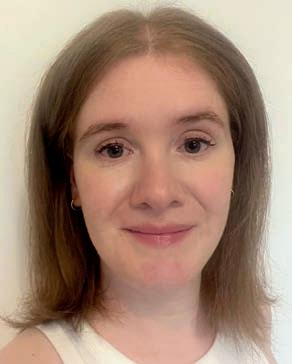
Although Kurt Weill was admired as one of the most outstanding young composers of his time during the Weimar Republic, he was ostracised during the
Nazi period in Germany because of his Jewish background, forcing him to emigrate to Paris in 1933. During this time of political upheaval and also personal change, Weill composed his Fantaisie symphonique. I always fi nd it fascinating how these influences make themselves heard in the music. The introduction of the symphony includes a contemplative melody in the trumpet, the second movement is characterised by the theme of a funeral march and the third movement begins with passages of runs gradually building up to a climax which could be interpreted as fleeing from a threatening situation.
Gehörte Kurt Weill in der Weimarer Republik noch zu den herausragendsten jungen Komponisten seiner Zeit, wurde er im nationalsozialistischen Deutschland wegen seiner jüdischen Abstammung geächtet, was ihn 1933 zur Emigration nach Paris zwang. In dieser Zeit des politischen Umbruchs, aber auch der persönlichen Veränderung, komponierte Weill seine Fantaisie symphonique. Ich fi nde es immer interessant, wie sich diese Einflüsse
in der Musik spüren lassen. So erklingt in der Einleitung der Symphonie eine nachdenkliche Melodie in der Trompete, den zweiten Satz durchzieht das Thema eines Trauermarsch und der dritte Satz beginnt mit Laufpassagen, die sich allmählich dramatisch steigern. Man kann darin so etwas wie eine Flucht aus der Bedrohung hören.
Schott Tokyo | Yuki Yokota
Der Kuhhandel
(A Kingdom for a Cow / Arms and the Cow) Operette in zwei Akten (1934)
Text von Robert Vambery (eng./dt.)
Eingerichtet und herausgegeben von Lys Symonette (1978)
Englische Textfassung von Jeremy Sams 120’
Schott Music distribution rights: worldwide
1S, 2 Mez, 4T, 2Bar, 1B-Bar, Knabenstimme, Chor, Schauspieler:innen
2 (beide auch Picc.) · 1 · 2 (1. auch Altsax., 2. auch Tenorsax.) · 1 - 1 · 2 · 2 · 1 - P. S. (4 Spieler) - Git. (auch Banjo u. Bassgit.) · Hfe. · Org. od. Harm. (auch Akk.) - Str.
A big cow depicted on the cover of a CD made quite an impression on me when I was a university student. When I listened to the recording casually, familiar melodies that reminded me of a peaceful rural town reached my ears. The contents of the CD were excerpts from the concert premiere of the German version of
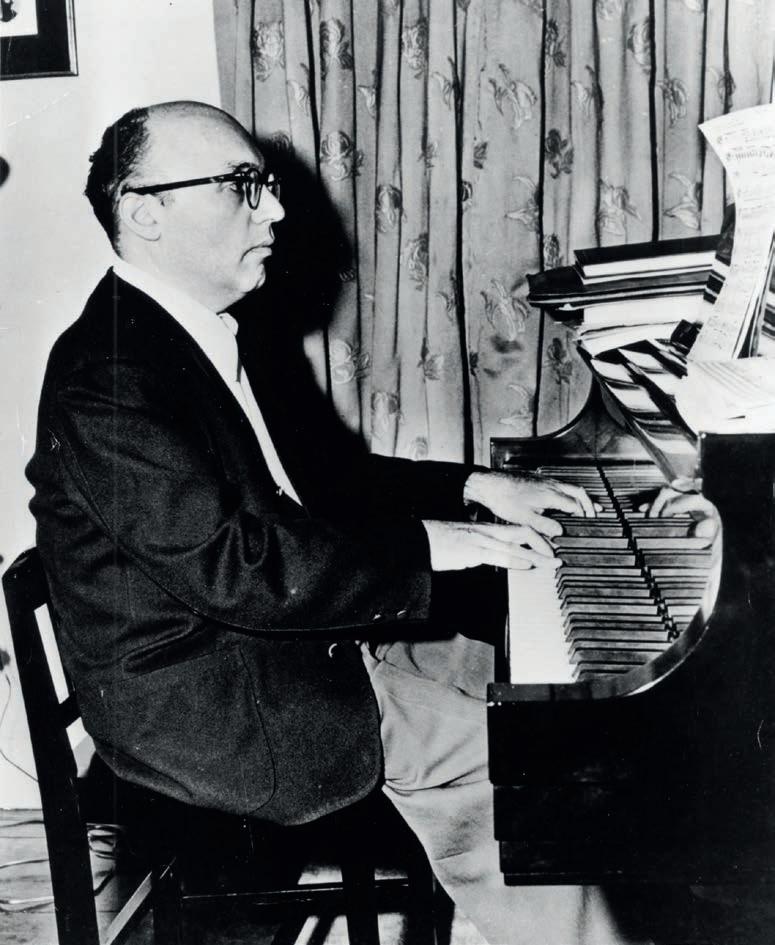
Der Kuhhandel revised in 1978 by Lys Symonette. The title Kuhhandel seems to mean ‘black market’ in German slang. A ‘cow’ symbolizes the peace of a fictional small Caribbean country, and ‘weapons’ threaten that peace, but illegal arms trades in the black market fail and peace returns to the small country. Th is operetta is a scathing political satire, fi lled with gentle music influenced by Offenbach, and we can enjoy it as a thrilling and entertaining work until today.
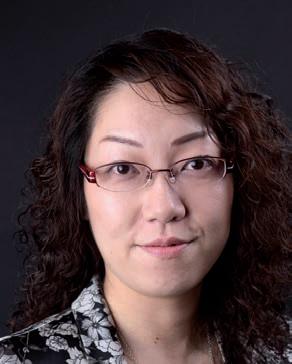
Eine große Kuh, die auf dem Cover einer CD abgebildet war, hat mich als Studentin sehr beeindruckt. Als ich die CD beiläufig anhörte, drangen vertraute Melodien an mein Ohr, die mich an eine friedliche, ländliche Stadt erinnerten. Der Inhalt der CD waren Ausschnitte aus der konzertanten Urauff ührung der 1978 von Lys Symonette überarbeiteten deutschen Fassung von Der Kuhhandel. Der Titel Kuhhandel lässt sich hier mit einem „Schwarzmarkt“ assoziieren, bei dem auch Waffen gehandelt werden. Die Kuh symbolisiert den Frieden eines fi ktiven kleinen karibischen Landes, der vom Handel mit Waffen bedroht wird. Aber der illegale SchwarzmarktWaffenhandel scheitert und der Frieden kehrt in das kleine Land zurück. Die Operette ist eine beißende politische Satire, die mit sanfter, von Offenbach beeinflusster Musik unterlegt ist. Wir können sie heute noch als spannendes und unterhaltsames Werk genießen.
Street Scene
American opera in two acts (1947)
Book by Elmer Rice, based on his play of the same name
Lyrics by Langston Hughes and Elmer Rice (Eng./Ger.)
German translation by Lys Symonette 120’
Kurt Weill Music
distribution rights worldwide: European American Music Distributors Company – Schott Music
6S, 4Mez, 1A, 4T, 3Bar, 1BBar, 1B, 1 boy soprano, 3 singer-dancers, children, speaking roles

1(pic).1.3(3.bcl).1-2.2.2.0-timp.2perc(glsp, tri, bells, gong, sus cym, cym (pair), 2tomt, military drum, s.d, b.d, chimes)-hp.pno(cel)str
also available:
Street Scenes
a concert sequence devised by Lys Symonette and Kim Kowalke from the opera ‘Street Scene’ (1998) for lyric soprano, dramatic soprano, lyric tenor, Broadway baritone, bass-baritone, optional mixed chorus and orchestra (Eng.) 55’
1(pic).1(ca).3(3.bcl).1-2.2.2.0timp.2perc(glsp, tri, bells, gong, s.d, military drum, b.d, crash cym, tom-t, chime, whip)hp.pno(cel)-str(min. 6.6.4.3.2)
Undoubtedly Kurt Weill’s American masterpiece, Street Scene captivates with its alluring musical numbers and plot that propels inexorably to its explosive climax. The opera unfolds over 24 hours on a steamy, New York City tenement block inhabited by a panoply of ethnically diverse immigrants playing out their hopes and dreams for a better future. What I particularly love about Street Scene is its brilliant synthesis of operatic and musical theater traditions. The work boasts the full range of Weill’s extraordinary skills as a composer for the lyric stage. Puccini-like lyricism (Anna Maurrant’s ‘Somehow I Never Could Believe’) commingles with jazz and blues (Sam Kaplan’s ‘Lonely House’) and classic Broadway style song and dance (‘Moon Faced, Starry Eyed’). It’s no surprise that the opera continues to beguile audiences worldwide.

Street Scene ist zweifellos Kurt Weills amerikanisches Meisterwerk und besticht durch seine verführerischen musikalischen Nummern und eine Handlung, die unaufhaltsam auf ihren explosiven Höhepunkt zusteuert. Die Oper zeichnet einen Tag in einem stickigen New Yorker Mietshaus nach, das von einer Vielzahl Einwanderer unterschiedlicher ethnischer Herkunft bewohnt wird, die ihre Hoff nungen und Träume von einer besseren Zukunft ausleben. Was mir an Street Scene besonders gefällt, ist die brillante Synthese von Opern- und Musiktheatertraditionen. Das Werk zeigt die ganze Bandbreite von Weills außergewöhnlichen Fähigkeiten als Komponist für die Bühne. Puccini-artige Lyrik (Anna Maurrants „Somehow I Never Could Believe“) vermischt sich mit Jazz, Blues (Sam Kaplans „Lonely House“) und dem klassischen Broadway-Song und Tanz („Moon Faced, Starry Eyed“). Es ist keine Überraschung, dass die Oper weiterhin das Publikum auf der ganzen Welt verzaubert.
Schott London | Ian Mylett
Four Walt Whitman Songs
Version for high voice and orchestra (1942–1947) (Eng.)
Orchestral accompaniment for songs one and two by Kurt Weill, for song four by Kurt Weill and John Baxindine (1942, 2013), for song three by Carlos Surinach (1956) 18’
Kurt Weill Music distribution rights worldwide: European American Music Distributors Company – Schott Music
2.1.2.bcl.1-2.2.2.0-timp.2perc(vib, tri, sus cym, gong, tam-t, 2military drums, s.d, b.d, chimes)-hp-str
also available:
Version for low voice and orchestra
Weill’s Four Walt Whitman Songs is one of those works where powerful storytelling, evocative music and contemporary world events come together to create art that is more than the sum of its parts. Weill’s desire to embrace American life after emigrating from Germany is well documented but I fi nd his originality in both balancing the European lieder tradition with a distinct American idiom and his decision to set words by one of America’s most famous poets about the Civil War (one of the most important historical events in America) as a commentary on World War 2, which was raging in Europe, engaging and thought provoking. The music is of course wonderful, with the powerfully dark opening of ‘Beat! Beat! Drums!’ to the melodic, lyrical and later dramatic ‘Come up from the fields, father’ with its hints of jazz heightening the emotional impact of a tragic story.

In Weills Four Walt Whitman Songs kommen kraftvolles Erzählen, stimmungsvolle Musik und zeitgenössische Weltereignisse in einer Kunstform zusammen, die mehr ist als die Summe ihrer Teile. Weills Wunsch, sich nach seiner Emigration aus Deutschland dem amerikanischen Leben zu öffnen, ist gut dokumentiert. Aber ich fi nde sowohl seine Originalität, die europäische Liedtradition mit einem ausgeprägten amerikanischen Idiom auszubalancieren, als auch seine Entscheidung, Worte eines der berühmtesten amerikanischen Dichter über den Bürgerkrieg (eines der wichtigsten historischen Ereignisse in Amerika) als Kommentar zum Zweiten Weltkrieg, der in Europa tobte, zu vertonen, fes-
selnd und zum Nachdenken anregend. Die Musik ist natürlich wunderbar, mit dem kraftvoll-düsteren Auftakt von „Beat! Beat! Drums!“ bis hin zum melodischen, lyrischen und später dramatischen „Come Up from the Fields, Father“ mit seinen Anklängen an Jazz, die die emotionale Wirkung einer tragischen Geschichte verstärken.
Liturgical setting of Sanctifi cation rite (1946) for full chorus, mixed voices, baritone solo and organ 5’
Kurt Weill Music / Edition EA 399
In the 1940s the Park Avenue Synagogue in New York began annually commissioning established and upcoming composers to contribute works to the Jewish liturgy in their own musical voice. Weill was commissioned to write for the synagogue’s 75th anniversary in 1946 and Kiddush is perhaps the fi rst synagogue piece written in an American popular style with the inclusion of blues and Broadway influences. The reverent baritone solo is underpinned by rich choral harmonies. I fi nd the music to offer a fascinating insight into the
pairing of both Weill’s Jewish background and musical expression. An invitation from Park Avenue for a second commission sadly never came to fruition.

In den 1940er Jahren begann die Park Avenue Synagogue in New York aufstrebende und bereits etablierte Komponist:innen alljährlich zu beauftragen, Werke für die jüdische Liturgie in ihrer eigenen musikalischen Sprache zu schreiben. Weill erhielt 1946 einen Kompositionsauft rag anlässlich des 75-jährigen Jubiläums der Synagoge. Kiddush ist vielleicht das erste Synagogenstück, das in einem amerikanischen populären Stil geschrieben wurde und Einflüsse von Blues und Broadway enthält. Das ehrfürchtige Bariton-Solo wird durch reiche Chorharmonien untermauert. Ich fi nde, dass die Musik einen faszinierenden Einblick in die Verbindung von Weills jüdischer Herkunft und seinem musikalischen Ausdruck bietet. Ein zweiter Kompositionsauft rag von Park Avenue kam leider nie zum Tragen.
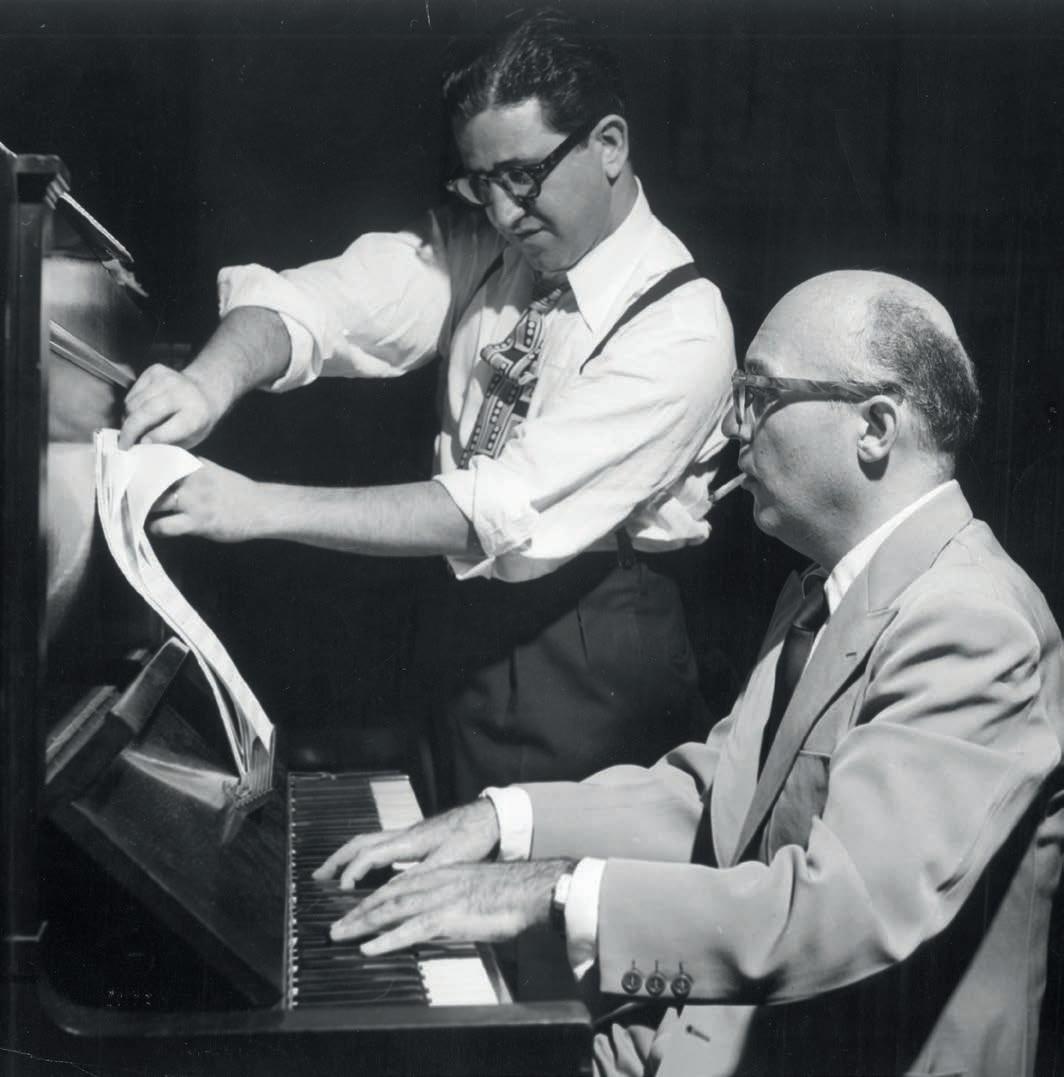

Richard Ayres
No. 57 (K’s Strange Day) for timpani and orchestra 14’
Kazutaka Morita, timpani
YLE Radion sinfoniaorkesteri (Finnish Radio Symphony Orchestra)
Nicholas Collon, conductor
4 Sep 2024 | Helsinki (FIN)
The Helsinki Music Centre, Concert Hall
In a lot of my music I try to make a sort of ‘film without pictures’ in the imagination of the listener. I’m very influenced by early films, and by people like Charlie Chaplin. There is often a central character around which a story revolves, in this case the timpanist. When I was still playing in orchestras, the timpanist seemed to be a mysterious figure, sitting alone and encamped behind a wall of enormous magical cauldrons. They often seemed to be bending over the drums as if in conversation with them. Half musician, half wizard. Richard Ayres
Bei einem Großteil meiner Musik versuche ich, in der Vorstellung des Publikums eine Art „Film ohne Bilder“ zu schaffen. Ich bin sehr beeinflusst von frühen Filmen und von Leuten wie Charlie Chaplin. Oft gibt es eine zentrale Figur, um die sich eine Geschichte dreht, in diesem Fall der/die Paukist:in. Als ich noch in Orchestern spielte, schien diese Person eine geheimnisvolle Figur zu sein, die allein hinter einer Wand aus riesigen magischen Kesseln saß. Oft schien sie sich über das Instrument zu beugen, als würde sie mit ihm sprechen. Halb Musiker, halb Zauberer. Richard Ayres
pic.1-2.2.1.cbsn-2.2.1.1-2perc(glsp, vib, tub bells, high metal wind chimes, b.d.)-str
Commissioned by the Finnish Radio Symphony Orchestra for their principal timpanist Kazutaka Morita
Herbert Willi Klavierstücke XII/XIII 4’
13 Sep 2024 | Feldkirch (A)
Schallwende – Festival für Neue Musik
Theater am Saumarkt
Yunus Kaya, Klavier
Herbert Willi Trio für Violine, Violoncello und Klavier 11’
13 Sep 2024 | Feldkirch (A)
Schallwende – Festival für Neue Musik
Theater am Saumarkt
Joanna Lewis, violin
Melissa Coleman, cello Yunus Kaya, piano
Valentin Silvestrov
Kantate Nr. 12
für Sopran (oder Bariton) und Kammerorchester
Gedichte von Taras Schewtschenko (Ukr.) 20’
13 Sep 2024 | Warszawa (PL)
Studio Koncertowe Polskiego Radia im. Witolda Lutosławskiego
N.N., soprano
Kyiv Camerata
Roman Rewakowicz, conductor
Klav. · Hrf. - Str. (8 · 8 · 6 · 4 · 4 · 2)
Richard Ayres
No. 58 (Bruckner) for ensemble and soundtrack 33’
13 Sep 2024 | Amsterdam (NL)
Muziekgebouw aan ’t IJ
Bruckner Casco Festival
Asko|Schönberg Ensemble
Ed Liebrecht, conductor
I’ve both loved the music of Anton Bruckner, and at the same time been confused by the composer. In this piece I use his notes, some historical facts, and quite a bit of imagination to celebrate his 200 th birthday. An intimate sound biography using recordings of things that Bruckner touched. Richard Ayres
Ich habe die Musik von Anton Bruckner in gleichem Maße geliebt, wie mich dieser Komponist durcheinander gebracht hat. In diesem Stück verwende ich Bruckners Notizen, einige historische Fakten und nicht wenig Fantasie, um seinen 200. Geburtstag zu feiern. Eine intime Klangbiografie mit Verwendung einiger Aufnahmen von Dingen, die Bruckner durch die Hände gegangen sind. Richard Ayres
fl.bsn-tpt-keybd(sampler)-vln.db
Commissioned by Stichting New Music First for the Bruckner Casco Festival
Noriko Koide
Shachihoko Golden March for orchestra
3’
21 Sep 2024 | Nagoya (J)
Nihon Tokushu Togyo Center for Culture & Arts [Nagoya Shimin Kaikan]
Nagoya Philharmonic Orchestra
Masato Suzuki, conductor
This lively march is themed on the ‘Shachihoko’, the symbol of Nagoya Castle, and ‘Miso’, the foundation of the food culture in Nagoya. The sound motif that stretches big from bottom to top (= the Shachihoko pose of sound) is used throughout: for example, glissandos of slide whistles, string instruments, timpani et al. Miso is a condiment that represents Nagoya, as seen in ‘Misokatsu’, ‘Miso stewed udon’, ‘Miso oden’ and so on. This march develops based on a motif that uses the sounds ‘mi’ and ‘sol’ (= the sound motif of Miso). Noriko Koide
Dieser lebhafte Marsch steht unter dem Motto „Shachihoko“, einem Symbol der Burg Nagoya in Form von kopfüber stehenden Seeungeheuerfiguren, sowie „Miso“, der Grundlage der Esskultur in der Stadt Nagoya. Das Klangmotiv, das sich von unten nach oben erstreckt (die typische Shachihoko-Pose), wird durchgängig durch Glissandi von Lotusflöten, Streichinstrumenten, Pauken und anderen Instrumenten verwendet. Miso hingegen, die charakteristische Gewürzpaste steht repräsentativ für Nagoya und lokale Gerichte wie „Misokatsu“, „Miso stewed udon“ und „Miso oden“. Der Marsch entwickelt sich auf der Grundlage eines Motivs, das die Töne „mi“ und „sol“ sinnfällig verwendet. Noriko Koide
pic.1.2.2.2-4.2.2.btbn.1-timp.perc3-str
Commissioned by Nagoya Philharmonic Orchestra
Christian Jost
Guten Abend, gut’ Nacht
Paraphrase nach dem gleichnamigen Lied von Johannes Brahms (dt.) für Violine, Violoncello und Klavier 2’
26 Sep 2024 | Trier (D)
Museum am Dom
Mosel Musikfestival
Boulanger Trio
Fazıl Say
Roots (Kökler) for violoncello solo, op. 108 22’
28 Sep 2024 | Kronberg im Taunus (D)
Casals Forum, Carl Bechstein Saal
Jean-Guihen Queyras, cello
Auftragswerk der Kronberg Akademie für Jean-Guihen Queyras
Julian Anderson
When I Come Back for soprano and ensemble
Text by Derick Thomson 5’
5 Sep 2024 | London (UK)
Wigmore Hall
Claire Booth, soprano
Nash Ensemble
Martyn Brabbins, conductor
fl(pic).cl(bcl)-pno-vln.vc
Commissioned by the Nash Ensemble for its 60 th anniversary, with funds provided by Dr Shirley Ellis and Amelia Freedman CBE
Chaya Czernowin
New Work for string quartet 15’
17 Oct 2024 | Paris (F)
Cité de la Musique, Auditorium Arditti Quartett
Auftragswerk des Arditti Quartetts
Chaya Czernowin
Unforeseen dusk: bones into wings for six amplified voices (SMezATBarB) and orchestra (with sampler) 34’

20 Oct 2024 | Donaueschingen (D) Baarsporthalle
Donaueschinger Musiktage
Neue Vocalsolisten
SWR Symphonieorchester
Vimbayi Kaziboni, conductor
In this piece, the voices do not tell stories. They transmit sensorial events of nacked emotions: voice as breath, as noise, as flight, a kind of butoh of the voice. An opera of sorts, the piece reaches deep internal regions of the self. The voice is situated within an orchestral primordial forest, jungle, a vast wilderness of unstoppable and uncontrolled growth. There is life everywhere … The piece invites the listener to vestiges of undiscovered connectivity between external and internal nature, which is at the same time deeply familiar, vulnerable and touching, and equally strange, foreign but above all, synaesthetic. Chaya Czernowin
In diesem Stück erzählen die Stimmen keine Geschichten. Vielmehr übermitteln sie sensorische Ereignisse nackter Emotionen: Stimme als Atem, als Geräusch, als Flucht, eine Art Butoh der Stimme. Als eine Art Oper erreicht das Stück tiefe innere Regionen des Selbst. Die Stimme erklingt wie in einem orchestralen Urwald, einem Dschungel, einer riesigen Wildnis mit unaufhaltsamen und unkontrolliertem Wachstum. Überall ist Leben … Das Stück bringt das Publikum auf die Spur einer unentdeckten Verbindung zwischen äußerer und innerer Natur, die einerseits zutiefst vertraut, verletzlich und berührend ist, andererseits aber auch fremdartig und vor allem synästhetisch. Chaya Czernowin
3 · 3 · 3 (alle auch Bassklar.) · 3 - 4 · 3 · 3 · 1 - S (3 Spieler) - Hfe. · Klav. · Sampler - Str.
Commissioned by New York Philharmonic and Südwestrundfunk
Fazıl Say Şahmeran for violoncello solo, soloistic percussion and string orchestra with harp arranged by Hugo Bouma 15'
24 Oct 2024 · Amsterdam (NL) Nikolas Altstaedt, cello Amsterdam Sinfonietta
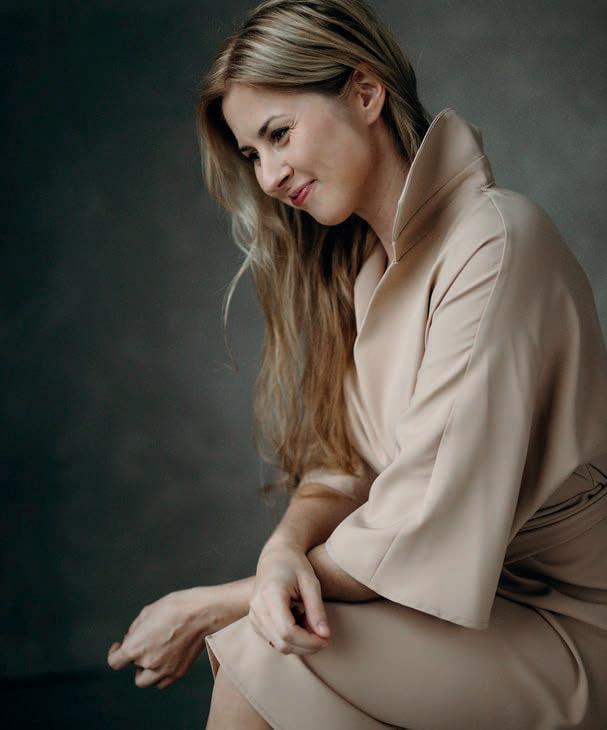
The works of Estonian composer Elis Hallik will now be published by Schott Music. Born in 1986, Hallik has made a name for herself in Europe with her individual style and will bring a new colour to the Schott catalogue. Hallik focuses in her compositions on the conscious perception of the present moment, exploring silence and noise in their various facets and micro-events in sounds and musical processes which present the opportunity to reflect on the existence surrounding us and its patterns. Frequently recurring themes in Hallik’s music include nature, the environment, climate change and archetypal forms of life. In her search for different structures and harmonies, Hallik attempts to make cyclical breathing and inner peace perceptible.
At the end of 2023, the Kairos label released a retrospective of Hallik's works on the portrait album ‘Born in Waves’ with recordings by Ensemble Musikfabrik, the Tallinn Chamber Orchestra, and others. The online magazine Bachtrack calls Hallik's orchestral work The Firehearted, an exploration of Ludwig van Beethoven’s sound world: ‘Witty and disturbing, as if you were looking at Beethoven through a magnifying glass – here Hallik displays her virtuoso orchestral work in its most dazzling form.’
Die Werke der estnischen Komponistin Elis Hallik werden zukünftig bei Schott Music verlegt. Die 1986 geborene Musikerin hat sich mit ihrem individuellen Stil in Europa einen Namen gemacht und wird eine neue Farbe in den Katalog von Schott bringen. In ihren Kompositionen beschäftigt sie sich mit der bewussten Wahrnehmung des gegenwärtigen Moments. Dabei untersucht sie Stille und Geräusche in ihren verschiedenen Facetten sowie Mikroereignisse in Klängen und musikalischen Prozessen. Ihre Werke bieten die Möglichkeit, die uns umgebende Existenz und ihre Muster zu reflektieren.
Häufig wiederkehrende Themen sind Natur, Umwelt, Klimawandel sowie archetypische Lebensformen. Bei der Suche nach verschiedenen Strukturen und Harmonien versucht Hallik, zyklisches Atmen und inneren Frieden erlebbar zu machen.
Ende 2023 veröffentlichte das Label Kairos eine Retrospektive von Halliks Werken auf dem Portrait-Album „Born in Waves“ mit Einspielungen des Ensemble Musikfabrik, dem Tallinn Chamber Orchestra und anderen. Das online Magazin Bachtrack bezeichnet Halliks Orchesterwerk The Firehearted als eine Auseinandersetzung mit der Klangsprache Ludwig van Beethovens. Das Werk sei „witzig und verstörend, als ob man Beethoven durch ein Vergrößerungsglas sehen würde. Hallik zeigt darin ihre virtuose Orchesterarbeit in ihrer schillerndsten Form.“
Péter Eötvös received a posthumous Artisjus Award for his opera Valuska, which was honoured as the classical musical work of the year. Valuska is the last of the thirteen operas created by the composer who passed away in March, and was simultaneously his first with a libretto in the Hungarian language. The world premiere took place in Budapest in December 2023, followed by the German premiere in Regensburg in February. The Artisjus Prize is an annual award for artists who have made outstanding achievements for the advancement and popularisation of Hungarian music.
Péter Eötvös‘ Oper Valuska wurde postum als klassisches Musikwerk des Jahres mit dem Artisjus Award ausgezeichnet. Valuska ist die letzte von dreizehn Opern des im März verstorbenen Komponisten und gleichzeitig die erste, die er in ungarischer Sprache schrieb. Die Uraufführung fand im Dezember letzten Jahres in Budapest, die deutsche Erstaufführung im vergangenen Februar in Regensburg statt. Der Artisjus Award wird seit 1986 jedes Jahr an Künstler:innen verliehen, die herausragende Leistungen bei der Förderung und Popularisierung ungarischer Musik erbracht haben.

Jörg Widmann
Photo: Marco Borggreve
Jörg Widmann has been appointed as a member of the Royal Swedish Music Academy for his ‘eminent services to music’. The Academy was founded in Stockholm in 1771 during the reign of King Gustav III to encourage musical education and the academic and cultural development of music, also functioning as a uni-
Herausgeber: Schott Music GmbH & Co. KG
Verantwortlich: Christopher Peter
Redaktion: Dr. Philipp Weber
Tel.: +49 6131 246-899 philipp.weber@schott-music.com
Mitarbeit: Dr. Joscha Schaback, Lea Wilms, Matthew Knight, Ian Mylett, Lauren Ishida, Norman Ryan, Yuki Yokota
Übersetzung: Lindsay ChalmersGerbracht
Design: Engler Schödel, Atelier für Gestaltung, Mainz
Layout und Satz: Stefan Weis, Mainz-Kastel
Redaktionsschluss: 15. Juni 2024
Druck:
Plump Druck & Medien GmbH Rolandsecker Weg 33 53619 Rheinbreitbach · Germany
An der Finanzierung des Unternehmens wirtschaftlich beteiligt sind: Jan Baechle, Strecker-Stiftung, Strecker Stiftung Beteiligungs GmbH
Contact us:
versity of music up until 1971. Each year, the institution awards around 400 scholarships funded by 115 different foundations.
Für seine „eminenten Verdienste um die Musik“ wurde Jörg Widmann zum Mitglied der Königlich Schwedischen Musikakademie ernannt. Die 1771 in Stockholm unter König Gustav III. gegründete Akademie fördert die künstlerische Erziehung sowie die wissenschaftliche und kulturelle Entwicklung von Musik und fungierte bis 1971 auch als Musikhochschule. Jährlich vergibt sie rund 400 Stipendien von 115 verschiedenen Stiftungen.
Schott Music GmbH & Co. KG Weihergarten 5 55116 Mainz · Germany
Tel.: +49 6131 246-886 infoservice@schott-music.com
Schott Music Ltd.
48 Great Marlborough Street London W1F 7BB · United Kingdom
Tel.: +44 20 7534 0750 promotions@schott-music.com
Schott Music Corporation 156 Fifth Avenue, Suite 1208
New York, NY 10010 · USA
Tel.: +1 212 461 6940 ny@schott-music.com
Schott Music Co. Ltd. Hiratomi Bldg., 1-10-1 Uchikanda, Chiyoda-ku Tokyo 101-0047 · Japan
Tel.: +81 3 6695 2450 promotion@schottjapan.com
© Schott Music GmbH & Co. KG, Mainz
Printed in Germany
Cover: Kurt Weill · Photo: Yousuf Karsh


Schott Music and partner publishers




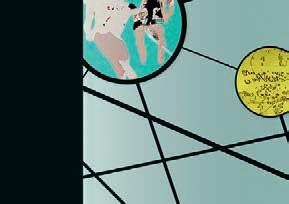






























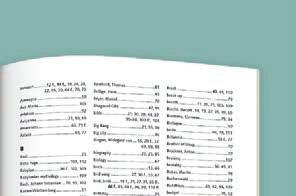










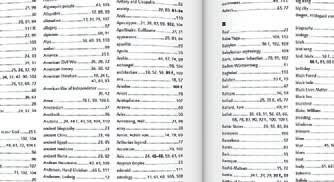





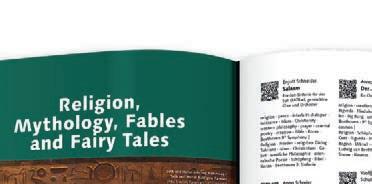







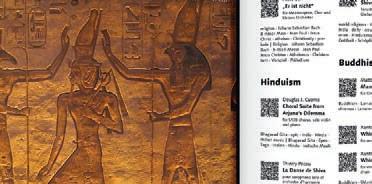













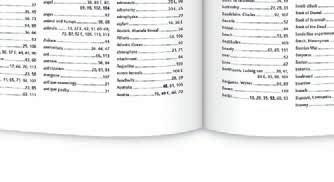































• A source of inspiration for your concert programmes

• Hundreds of fascinating programmatic works by the most important composers of our time


• A practical and user-friendly research tool
• Structured theme-related categories and extensive keyword index
• Digitally integrated
























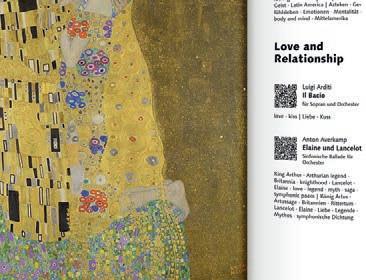

















5 Sep 2024 | København (DK)
Det Kongelige Teater (‘Giant Steps Balanchine’)
Paul Hindemith Theme with four Variations
Chanmin Chung · George Balanchine · Den Kongelige Ballet
Revival
15 Sep 2024 | Wuppertal (D) Opernhaus
Richard Strauss Salome
Reduzierte Fassung
Patrick Hahn · Andreas Schwalbach · Britta Leonhardt
21 Sep 2024 | Hamburg (D)
Staatsoper, Großes Haus
Carl Orff Trionfi
Kent Nagano · Calixto Bieito · Rebecca Ringst · Anja Rabes
In Trionfi, the otherwise separately performed Carmina Burana, Catulli Carmina and the Trionfo di Afrodite are combined in a spectacular triptych. Die Trionfi verbinden die üblicherweise alleine aufgeführten Carmina Burana mit den Catulli Carmina und dem Trionfo di Afrodite zu einem spektakulären Triptychon.
21 Sep 2024 | Kiel (D)
Opernhaus
Richard Strauss
Der Rosenkavalier
Gabriel Feltz · Sam Brown · Stuart Nunn
22 Sep 2024 | Frankfurt/Main (D)
Oper
Hans Werner Henze
Der Prinz von Homburg
revidierte Fassung 1991
Takeshi Moriuchi · Jens-Daniel Herzog · Johannes Schütz
27 Sep 2024 | Napoli (I)
Teatro di San Carlo
Richard Strauss
Elektra
Reduzierte Fassung
Mark Elder · Klaus Michael Grüber · Anselm Kiefer
27 Sep 2024 | Brno (CZ)
Národní divadlo
(‘Cyrano de Bergerac’)
Johann Sebastian Bach
Goldberg Variationen für kleines Orchester eingerichtet von Józef Koffler
Jakub Klecker · Jiří Bubeníček · Otto Bubeníček ·Nadina Cojocaru · Ballett Theatre Brno
28 Sep 2024 | Budapest (HU)
Magyar Állami Operaház
Richard Wagner
Der fliegende Holländer
Richard-Wagner-Gesamtausgabe von Egon Voss
Rajna Martin · Szikora János · Szendrényi Éva · Berzsenyi Krisztina
28 Sep 2024 | Wiesbaden (D)
Hessisches Staatstheater
György Ligeti
Le Grand Macabre
Leo McFall · Pınar Karabulut · Jo Schramm · Teresa Vergho
28 Sep 2024 | Basel (CH) Theater
Richard Wagner
Siegfried
Richard-Wagner-Gesamtausgabe von Klaus Döge
Jonathan Nott · Benedikt von Peter · Caterina Cianfarini · Natascha von Steiger · Katrin Lea Tag · Sinfonieorchester Basel
29 Sep 2024 | Düdingen (CH)
Podium Düdingen
Gerald Barry La Plus forte
Jérôme Kuhn · NOF - Neue Oper Freiburg · BBC Orchestra
2 Oct 2024 | Darmstadt (D) Staatstheater, Großes Haus
Bernd Alois Zimmermann
Requiem für einen jungen
Dichter
Karsten Januschke · Karsten Wiegand
The Lingual, a ‘language piece’, combines soloists, a narrator, three choirs, an orchestra, a jazz combo and pre-recorded tapes which also includes political speeches.
Das Lingual, „Sprachstück“, vereint Solisten, Sprecher, drei Chöre, Orchester, eine JazzCombo und Einspielbänder, auf denen unter anderem politische Ansprachen zu hören sind.
3 Oct 2024 | Hamburg (D)
Staatsoper
Modest Mussorgskij
Boris Godunow
Revidierte Neuausgabe herausgegeben von Michael Rot
Kent Nagano · Frank Castorf · Aleksandar Denić · Adriana Braga Peretzki Revival
3 Oct 2024 Bonn (D) Theater, Großes Haus
Richard Wagner
Die Meistersinger von Nürnberg
Richard-Wagner-Gesamtausgabe von Egon Voss
Dirk Kaftan · Aron Stiehl
5 Oct 2024 | Stuttgart (D) Staatsoper
Paul Hindemith
Sancta Susanna
Marit Strindlund · Florentina Holzinger · Nikola Knežević
Hindemith’s scandalous work is the focal point of a large-scale feminist performance also involving sex workers and body modification artists.
Hindemiths Skandalstück steht im Zentrum einer großen feministischen Performance, in der auch Sexarbeiterinnen und Body-Modification-Artists mitwirken.
5 Oct 2024 | Hannover (D) Opernhaus
Richard Strauss Salome
Stephan Zilias · Ingo Kerkhof · Anne Neuser · Inge Medert
Revival
5 Oct 2024 | Radebeul (D) Studiobühne
Guus Ponsioen
Drei alte Männer wollten nicht sterben
Uwe Zimmermann · Luisa FokiKoepp · Claudine Walter ➥ see / siehe Children’s Corner
6 Oct 2024 | Basel (CH) Theater
Richard Wagner Götterdämmerung
Richard-Wagner-Gesamtausgabe von Hartmut Fladt
Jonathan Nott · Benedikt von Peter · Caterina Cianfarini · Natascha von Steiger · Katrin Lea Tag
10 Oct 2024 | Praha (CZ)
Národní divadlo (Státní opera)
György Ligeti
Le Grand Macabre
Jiří Rožeň · Nigel Lowery
Revival
12 Oct 2024 | Milano (I)
Teatro alla Scala
Richard Strauss
Der Rosenkavalier
Kirill Petrenko · Harry Kupfer · Hans Schavernoch · Yan Tax
13 Oct 2024 | Stuttgart (D)
Staatstheater
Richard Strauss
Salome
Tomáš Hanus · Kirill Serebrennikov ·
Pierre Jorge Gonzalez
Revival
19 Oct 2024 | Gelsenkirchen (D)
Musiktheater im Revier
Carl Orff
Carmina Burana
Rasmus Baumann · Giuseppe Spota · Alessio Monforte · Alessandro Vigilante · MiR Dance Company
20 Oct 2024 | München (D) Nationaltheater
György Ligeti
Le Grand Macabre
Kent Nagano · Krzysztof
Warlikowski · Claude Bardouil · Małgorzata Szczęśniak
Revival
With a new production and an elaborate supporting programme – Ligeti's Juke Box –the State Opera is honouring the composer on his 101st birthday.
Mit einer Neuinszenierung und einem aufwändigen Rahmenprogramm – Ligetis Juke-Box –ehrt die Staatsoper den Komponisten zum 101. Geburtstag.
25 Oct 2024 | Gera (D)
Theater, Großes Haus
Richard Wagner
Der fliegende Holländer
Richard-Wagner-Gesamtausgabe von Egon Voss
Ruben Gazarian · Achim Freyer
27 Oct 2024 | München (D) Nationaltheater
Richard Wagner
Das Rheingold
Richard-Wagner-Gesamtausgabe von Egon Voss
Vladimir Jurowski · Tobias Kratzer · Rainer Sellmaier
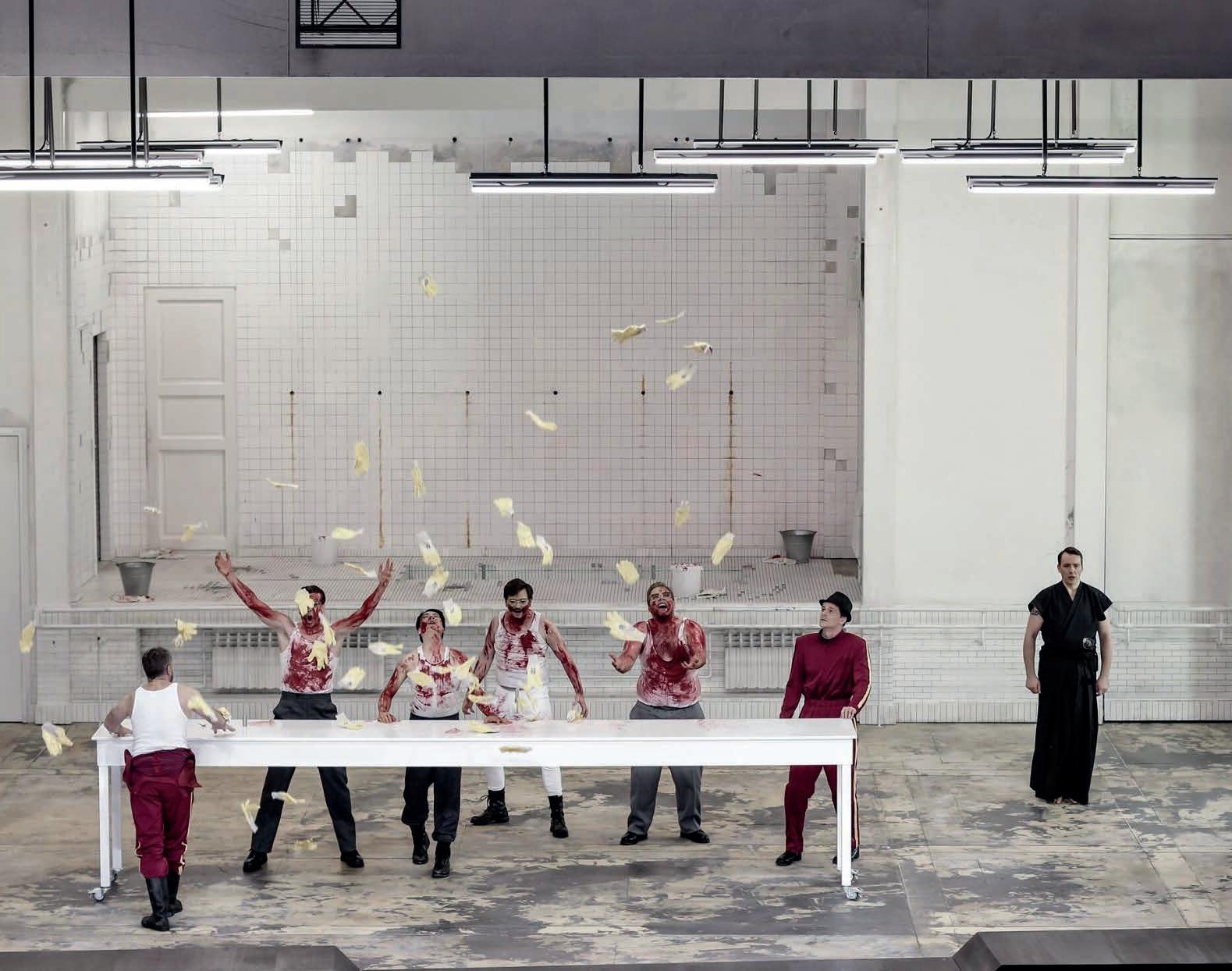
Arnold Schönberg
150 th Birthday | 13 September

Schoenberg went further than any other composer of his time in implementing the radical changes in contemporary music in his works, while still considering his compositions within the Second Viennese School to be a logical continuation of the western musical tradition, particularly of the Austrian movement. Schoenberg came from a Jewish family and was forced into exile via Paris to the USA in 1933. He received US-American citizenship in 1941. As a teacher of composition, he helped to shape the careers of several generations of renowned musicians and composers. He developed twelve-note technique which became the starting point for serial composition processes in the 1950s. Although his opera Moses und Aron remained incomplete, it remains one of the milestones of modern music theatre.
Wie kein anderer Komponist seiner Zeit realisierte Schönberg mit seinen Werken radikal den Umbruch zur Neuen Musik. Dennoch verstand er seine Werke der „Zweiten Wiener Schule“ stets als folgerichtige Weiterführung der abendländischen, insbesondere österreichischen Musiktradition. Schönberg stammte aus einer jüdischen Familie und musste 1933 über Paris in die USA emigrieren. 1941 erhielt er die amerikanische Staatsbürgerschaft. Als Kompositionslehrer hat er mehrere Generationen bedeutender Musiker und Komponisten geformt. Die von ihm geschaffene Zwölftontechnik wurde seit den 50er Jahren Ausgangspunkt serieller Kompositionsverfahren. Seine Oper Moses und Aron blieb unvollendet, gehört aber dennoch zu den Meilensteinen modernen Musiktheaters.
Steve Martland
70 th Birthday | 23 October

Steve Martland defied convention by blending classical tradition with a plurality of unorthodox musical influences both ancient and modern. He worked extensively with artists outside of classical institutions, toured internationally with the Steve Martland Band and inspired new generations through his Strike Out composition courses for school children. Following his untimely death in 2013, Martland’s music continues to live on with performances this year of Summer Rounds and Patrol at The Three Choirs Festival, legacy concert series ‘Steve Martland Hits the Club’ at bars across London and Oxford and the 2023 NMC rerelease of Factory Records recordings.
Steve Martland setzte sich über viele Konventionen hinweg, indem er die klassische Tradition mit einer Vielzahl unorthodoxer musikalischer Einflüsse aus der Antike und der Moderne verband. Er arbeitete ausgiebig mit Künstler:innen außerhalb klassischer Institutionen zusammen, tourte international mit der Steve Martland Band und inspirierte neue Generationen durch seine „Strike Out“-Kompositionskurse für Schulkinder. Nach seinem frühen Tod im Jahr 2013 lebt Martlands Musik auch heute noch unter anderem durch die Aufführungen von Summer Rounds und Patrol beim Three Choirs Festival 2024 sowie durch die Konzertreihe „Steve Martland Hits the Club“ in Bars in London und Oxford weiter. Das Label NMC brachte vergangenes Jahr nochmals die Einspielungen von Factory Records heraus.
Harry Partch · 50 th anniversary of death | 3 September

The composer, inventor, instrument maker and music theorist Harry Partch is without doubt one of the most innovative and idiosyncratic musical figures of the 20 th century. Partch created radically new music using microtones, his own tonal system and newly developed musical instruments which had nothing whatsoever to do with already established musical traditions. His works including Delusion of the Fury and The Bewitched are unique blends of theatre, music and rituals. Partch’s indefatigable spirit of invention and his vision of a new musical concept have continued to inspire musicians and composers across the world up to the present day. His musical legacy lives on in the unconventional beauty and profundity of his tonal world.
Als Komponist, Erfinder, Instrumentenbauer und Musiktheoretiker in Personalunion gehört Harry Partch ohne Zweifel zu den innovativsten und eigenwilligsten Musikerpersönlichkeiten des 20. Jahrhunderts. Mit seiner mikrotonalen Musik, der Entwicklung eines eigenen Tonsystems sowie neuer Musikinstrumente schuf Partch radikale Neuerungen jenseits der althergebrachten Musiktradition. Seine Werke, darunter Delusion of the Fury und The Bewitched, sind einzigartige Verschmelzungen von Theater, Musik und Ritual. Partchs unermüdlicher Forschergeist und seine Vision eines neuen Musikverständnisses inspirieren bis heute Musiker:innen und Komponisten:innen weltweit. Sein Vermächtnis lebt in der unkonventionellen Schönheit und Tiefe seiner Klangwelt fort.
Xilin Wang Symphony No. 3
China National Symphony Orchestra · Emmanuel Siffert, conductor
Recorded live from the Beijing Concert Hall WERGO

Gavin Bryars 11th Floor
Édouard Lock, choreographie
GB RECORDS
Gavin Bryars
The Leeds Bells
Leeds Minster Bells GB RECORDS
Dominique Le Gendre
In Praise of the Poet: for Adam Zagajewski
Wendy Case, violin BLUE GRIFFIN RECORDING
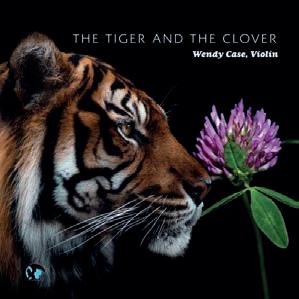
Hans Werner Henze
Royal Winter Music I, II
Roberto Tascini, guitar GUITART
Hans Werner Henze
Konzertmusik für Violine und kleines Kammerorchester Il Vitalino raddoppiato
Drei Mozartsche Orgelsonaten Ziyu He, violin · Mozarteumorchester Salzburg · Lin Liao, conductor
After criticising Mao’s cultural politics, Xilin Wang was sentenced to 14 years in exile and forced labour. He describes his Symphony No. 3 as an ‘earnest meditation’ on the inhumanity of the Great Cultural Revolution, a work composed under the impression of the massacre of Tiananmen Square. The composition is dedicated to ‘human beings with high ideals who campaign for democracy and freedom across the world’.
Nach seiner Kritik an der Kulturpolitik Maos wurde Xilin Wang zu 14 Jahren Verbannung und Zwangsarbeit verurteilt. Seine Symphony No. 3 bezeichnete er als „ernste Meditation“ über die unmenschliche „Große Proletarische Kulturrevolution“ und komponierte sie unter dem Eindruck des Massakers am Platz des Himmlischen Friedens. Gewidmet ist das Werk „den Menschen mit hohen Idealen, die überall auf der Welt für Demokratie und Freiheit eintreten“.
Johanna Senfter
Trio für Klarinette, Horn und Klavier, op. 103
Quintett für Klarinette und Streichquartett, op. 119
Sonate für Klarinette und Klavier, op. 57 Else Ensemble CPO
Robert Schumann / Aribert Reimann
Frauenliebe und Leben
Claudia Barainsky, soprano · Delian Quartett
ECM RECORDS
Michael Tippett
A Child of Our Time
Paul Hindemith
Sonata (1948) · Kleine Sonate · A frog he went a-courting · Meditation aus dem Tanzspiel „Nobilissima Visione“ · Drei leichte Stücke · Sonate op. 11/3 (1921)
Paul Hindemith / Fazıl Say
Sonate op. 11/3 (1919)
Umberto Aleandri, cello · Filippo Farinelli, piano
BRILLIANT CLASSICS
Paul Hindemith
Symphonie Mathis der Mahler Theme with four Variations
Anna Gourari, piano · Orchestra della Svizzera italiana · Markus Poschner, conductor ECM RECORDS
Toshio Hosokawa
Three Essays · Mei-An · Three Love Songs · Arc-Song · Vertical Time Study II
Masanori Oishi, saxophone · Ilse Eerens, soprano · Mayumi Miyata, sho · Naoko Yoshino, harp · Saori Oya, piano · Tomoko Kasai, percussion KAIROS
Christoph Willibald (Ritter von)
Gluck / Gavin Bryars
Dido and Orfeo
Ida Toninato, soprano, alto and baritone saxophones · Jennifer Thiessen, viola · Jean-Christophe Lizotte, cello · Njo Kong Kie, piano
GB RECORDS
Nikolai Kapustin
Jazz Preludes op. 53 (selection)
György Ligeti
Études pour Piano (selection)
Alexander Nikolajewitsch Skrjabin
Piano Sonata No. 3 op. 23
Yuja Wang, piano DEUTSCHE GRAMMOPHON
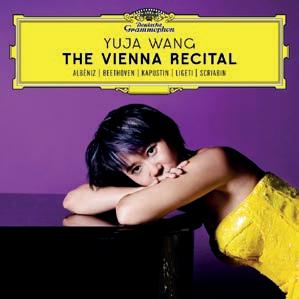
Krzysztof Penderecki
Concerto Doppio per violino, viola (violoncello) ed orchestra (version for flute and clarinet)
Concerto per corno ed orchestra „Winterreise“ (version for trombone)
Concerto per flauto (clarinetto) ed orchestra da camera
Patrick Gallois, flute · Michel Lethiec, clarinet · Wojciech Jeliński, trombone · Krzysztof Grzybowski, clarinet · Jerzy Semkow Polish Sinfonia Iuventus Orchestra · Maciej Tworek, conductor DUX
Pumeza Matshikiza, soprano · Sarah Connolly, mezzo-soprano · Joshua Stewart, tenor · Ashley Riches, bassbaritone · BBC Symphony Chorus · BBC Symphony Orchestra · Andrew Davis, conductor CHANDOS
Pēteris Vasks
Violin Concerto No. 2 Vientuļais eņģelis (Lonely Angel)
Sebastian Bohren, violin · Münchener Kammerorchester · Sergej Boklhovets, conductor AVIE
Huw Watkins
Piano Trio No. 1 · Little Symphony · Piano Quartet · Concertino · Piano Trio No. 2 Leonore Piano Trio · Orchestra Nova & George Vass RESONUS CLASSICS


You can find the new recordings featured on this page in our playlists on YouTube Music and Spotify. Die Neuerscheinungen auf dieser Seite finden Sie in unseren Playlists auf YouTube Music und Spotify.


https://bit.ly/sepoct24yt http://bit.ly/sepoct24sy
(Van drie oude mannetjes die niet dood wilden / The Three Old Men Who Didn‘t Want to Die) Eine komische Oper für Kinder (1997) Libretto von Suzanne van Lohuizen nach ihrem gleichnamigen Theaterstück (dt./ndl./engl.) Deutsch von Barbara Buri, englisch von Rina Vergano
Musikalisches Arrangement von Sylvia Maessen 60’
S. (1 Spieler) - Akk. · Klav. (ad lib.) - Kb.
Dietrich, ein alter Mann, ein Junge - Lothar, ein alter Mann, ein Junge - Oliver, ein alter Mann, ein Junge (Die drei Jungen singen nicht und können auch von Puppen dargestellt werden.)
Upcoming: 5 Oct 2024 | Radebeul (D) Theater Radebeul, Studiobühne Uwe Zimmermann, staging
One day, Dietrich, Lothar and Oliver receive a letter which states that they will soon die. They are shocked as they have certainly not finished with life. Ambitions remain such as to ride through the desert on a camel and climb the highest mountain in the world with hob-nailed boots. Plus, they must have breakfast, argue amongst themselves, explore love, and tidy up. However, darkness falls and the exhausted men have at last had enough of life. ‘The Three Old Men who Didn’t Want to Die is an opera for children from the age of four or to five up. My librettist Suzanne has come up with a wonderful humour-filled work. What is most important is that she has succeeded in making the subject of death plausible and comprehensible for children, primarily through her sense of humour.’ (Guus Ponsioen) .
Dietrich, Lothar und Oliver erhalten eines Tages einen Brief. Darin steht, dass sie sterben müssen. Sie sind empört. Sie sind doch noch nicht fertig mit dem Leben. Sie wollen noch auf einem Kamel durch die Wüste reiten, mit Steigeisen den höchsten Berg der Welt besteigen, sie müssen frühstücken, sich streiten, die Liebe erleben und aufräumen. Aber dann wird es dunkel und die erschöpften Männer haben schließlich doch ein bisschen genug vom Leben. „ Drei alte Männer wollten nicht sterben ist eine Oper für Kinder ab vier, fünf Jahren. Suzanne, meine Librettistin hat sich ein wunderbares Stück ausgedacht – mit so viel Humor. Sie schafft es vor allem mit diesem Humor das Thema ,Sterben‘ für Kinder nachvollziehbar und begreifbar zu machen.“ (Guus Ponsioen)
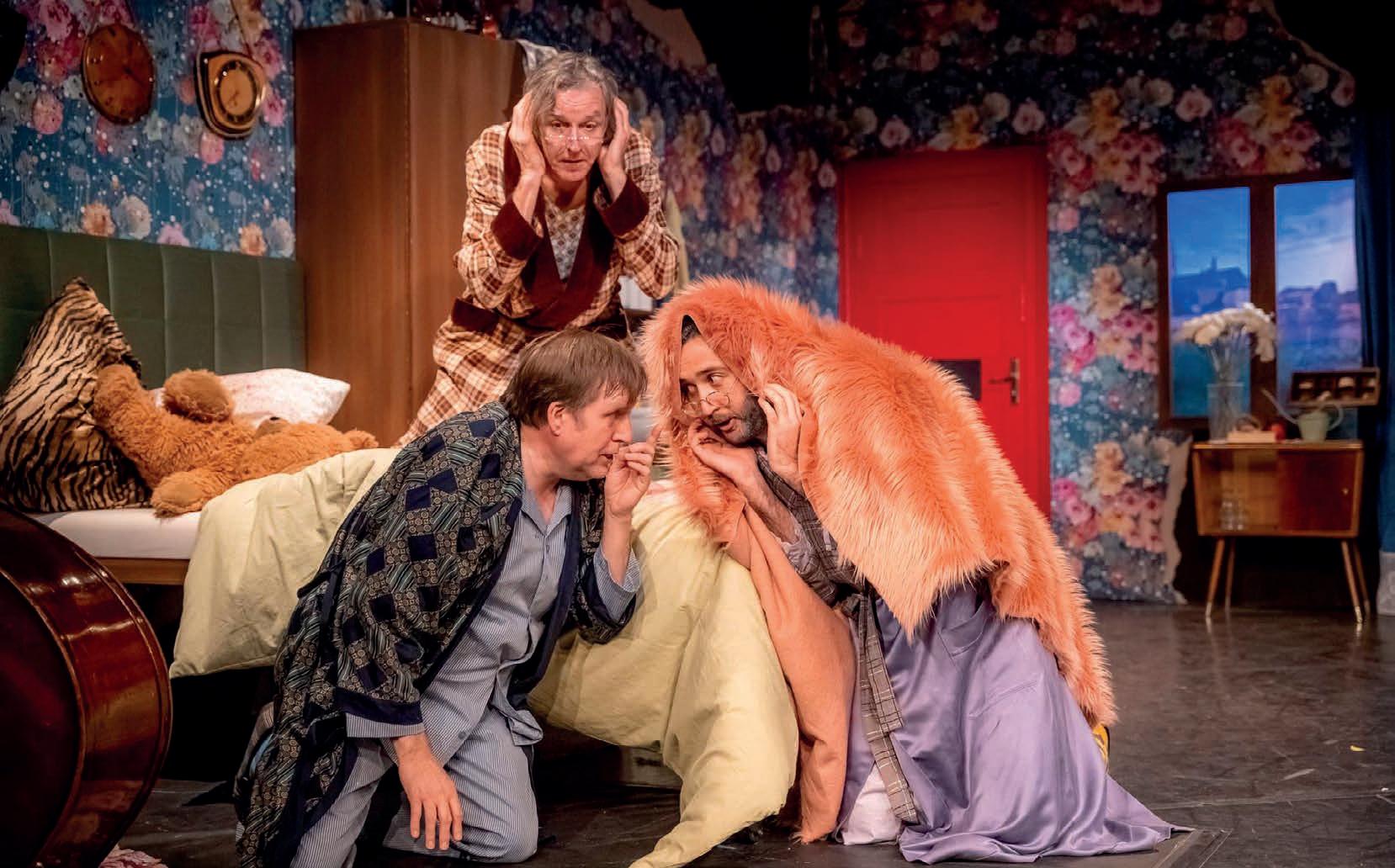

1825 - 2025
NEW PUBLICATIONS 2025
Reconstruction of Simplicius 1887
Johann Strauss utilised the striking antiwar libretto to create a highly Romantic opera whose stirring drama leads us far away from the well-trodden path of Strauss’s operettas. The story of the young boy robbed by soldiers who assumes the character traits of his tormentors as a consequence of repression forms the foundations for the unmasking of the inhumane rhetoric of warfare. What could be more moving than exercising child soldiers and a young cavalier plagued by alcoholism who has lost all feeling for the borders between play and reality?
9 of 19 stage works all instrumental works all vocal works Supplement Rot Catalogue RV
Editor: Michael Rot
COMPLETE EDITION
Edited by Michael Rot
Academic critical edition in 42 volumes. Subscription volumes, individual volumes, scores, piano reductions, parts, material for purchase and for hire. Digital form.
Waldmeister, an operetta in three acts featuring extensive waltzes and catchy melodies and couplets which could not conceal the fact that Strauss had forged a path leading towards the world of modern music in his late work. The composition’s particular charm lies in the seething tension between tradition and innovation revealing Strauss as a herald of the twentieth century.
available through SCHOTT
There are still numerous treasures to be discovered in the compositional output of the master composer such as the two Traumbilder dating from 1898 and the original version of Aschenbrödel which is still awaiting its premiere. The enchanting Romanzen for violoncello and orchestra and the composition Le Désir featuring a solo for cornet are waiting to be taken up again into the repertoire alongside the also forgotten concert pieces Im russischen Dorfe and Hommage au public Russe.
NEW ARRANGEMENTS FOR CHAMBER ORCHESTRA in a variety of different instrumentations CHORAL WORKS for male voice choir and orchestra
Bruckner’s autograph manuscripts display very few notational errors, but present particular problems from the aspect of practical performance (dynamic markings, articulation and tempo) and the complex source situation regarding his works requires the incorporation of existing first copies, manuscript part material, first editions and their corresponding galley proofs and secondary documents alongside the autographs themselves. This is the mission of the Anton Bruckner Urtext Complete Edition: all sources are subjected to a meticulous comparative examination and displayed within a new context.
Academic-practical new edition with subscription volumes and sales editions in preparation. Material for hire. Coloured illustrations. Digital form.
The editing director Dr Benjamin-Gunnar Cohrs has prematurely passed away unexpectedly. The editorial direction, editor and editorial board regard it as their task to continue the publication of the complete edition on the basis of the colour notation as developed by the publishing house, the graphic concept of different readings and the guidelines authoritatively defined by Cohrs and the catalogue of works.
4th Symphony in E flat major, 2nd version (1880)
incl. Scherzo (1876) and Finale ‚folk festival‘ (1878) with the possibility of performing the work in its phases dating from 1878, 1881 and 1882
5th Symphony in B flat major incorporating the autograph entries of an anonymous copy of the score
6th Symphony in A major clarification of the metronome markings in the autograph and the problems surrounding articulation
7th Symphony in E major incorporating numerous corrections authorised by Bruckner in Karl Muck’s performance score
8th Symphony in C minor - in 3 versions NEW PUBLICATION 2025
Katherine Balch
Obstenmelodie for solo piano 6’ ED 30450
Leo Delibes / Emile Naoumoff Blumenduett
Transkription aus der Oper Lakmé für Klavier 5’ ED 23884

Dominique Le Gendre In Praise of the Poet: for Adam Zagajewski for solo violin 5’ ED 14165
Sebastian Hilli Rack and Pinion für Klavier 15’ ED 23777
Heinz Holliger Gesammelte Kadenzen, Auszierungen und Bearbeitungen zu Oboenkonzerten aus Barock und Klassik ED 23023 (Band I: Solokonzerte) ED 23812 (Band II: Doppelkonzerte)

Toshio Hosokawa Three Essays for oboe solo 8’ SJ 1216
Toshio Hosokawa Edi for clarinet solo 5’ SJ 1219
Pierre Jalbert Two Sides for solo guitar 11’ ED 30431
Garth Knox 3 New Spaces für Viola 10’ ED 23820
Han Lash Start for solo snare drum 7’ ED 30327
Lei Liang Journey for solo violin 10’ ED 30455
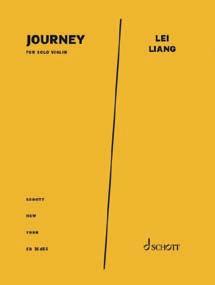
Lei Liang Lakescape IX for piccolo 7’ ED 30462
Enjott Schneider Notturno oscuro „… erbärmlich gekrümmt“ 7’ ED 23811
Alvin Singleton Argoru IX for solo violin 10’ ED 30427
Pēteris Vasks Castillo Interior Fassung für Klavier 12’ ED 23484
Pēteris Vasks Dzeguzes balss (Kuckucksruf) Frühlingselegie für Klavier 13’ ED 23549

Xiaogang Ye Golden Hydrangea op. 91 für Violine solo 5’ ED 23350
Peter Eötvös Speaking Drums Four poems for percussion solo Version for percussion solo by Leonie Klein 10’ BAT 60

Stefan Heucke Sonate op. 114, 1 für Flöte und Klavier 20’ FTR 247
Sebastian Hilli Elogio de la sombra für Streichquartett 17’ ED 23776
Peter Eötvös Drei Aphorismen von Heinrich Heine für 8-stimmigen gemischten Chor SSAATTBB 9’ SKR 20134
Heinz Holliger 3 Madrigale für 7 Frauenstimmen, 4-5 gemischte Stimmen (solistisch oder chorisch) und Fernchor ad lib. nach Gedichten von Nelly Sachs, Georg Trakl und Elsbeth Huber 25’ SKR 20135
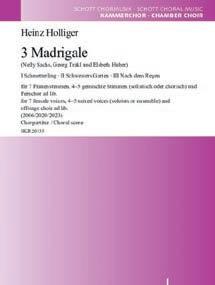
Toshio Hosokawa
Drei Engel-Lieder für Sopran und Harfe Texte von Else Lasker-Schüler and Gershom Scholem 20’ SJ 1224
Robert Schumann / Aribert Reimann Frauenliebe und Leben, op. 42
Transkription für Sopran und Streichquartett von Aribert Reimann (2018–2019) 22’ ED 23189
Valentin Silvestrov Psalm für großen gemischten Chor a cappella 8 Variationen über das ukrainische Volkslied „Oh, hinter dem steinigen Berg hervor“ 40’ BEL 452
Valentin Silvestrov Triptychon 3 geistliche Gesänge gemischter Chor a capella 10’ BEL 483
Don Davis Matrix
Complete Film Score OMNI 95592

James Horner
Die Maske des Zorro Complete Film Score OMNI 95561
John Powell Drachenzähmen leicht gemacht 3: Die geheime Welt
Complete Film Score OMNI 95585
Thematic Worlds
A program music guide of hire works by Schott and partner publishers KAT 3702-99
thematic worlds























(The Eternal Road) Biblical Drama in four parts by Franz Werfel 1934–1936 English translation by Ludwig Lewisohn (Eng./Ger.)
175’
2S · 1Mez · 4T · 4Bar · 1B - SATB chorus - speaking roles
2(pic).1.3(1.Ebcl).2bcl-4.3.3.1timp.2 or 3perc-[Hawaiian]gtr. hp.2pno.org-str
Kurt Weill Music distribution rights worldwide: European American Music Distributors Company – Schott Music
also available:
Die Verheißung
Oratorium nach „Der Weg der Verheißung“, eingerichtet von Ed Harsh (2012) für Solisten, zwei Schauspieler und gemischten Chor 105’
Der Weg der Verheißung was written to awaken the world to the dangers of antisemitism. Conceived in 1933, the work had as its original creative team three famous Jewish artists: Max Reinhardt, Franz Werfel, and Kurt Weill. A monumental stage work that tells the history of the Jewish people as a human narrative, Der Weg der Verheißung is the work that connects Weill’s European and American careers.
Its music demonstrates the full range of the composer’s musical-dramatic skill and command of style, from Th reepenny-like song to massive oratorio to near-Wagnerian music drama. An available concert version, titled Die Verheißung, incorporates all of the musical highlights into an evening-length whole. Also available is Propheten, based on the second half of Der Weg der Verheißung
Der Weg der Verheißung wurde komponiert, um die Welt auf die Gefahren des Antisemitismus aufmerksam zu machen. Das 1933 konzipierte Werk hatte drei berühmte jüdische Künstler im ursprünglichen Kreativteam: Max Reinhardt, Franz Werfel und Kurt Weill. Das monumentale Bühnenwerk, das die Geschichte des jüdischen Volkes als menschliches Narrativ erzählt, verbindet Weills europäische und amerikanische Karrieren miteinander. Die Musik zeigt die ganze Bandbreite des musikdramatischen Könnens und der Stilbeherrschung des Komponisten, vom Dreigroschenlied über das gewaltige Oratorium, bis hin zum Wagner-nahen Musikdrama. Die Konzertfassung mit dem Titel Die Verheissung fasst alle musikalischen Höhepunkte zu einem abendfüllenden Ganzen zusammen. Ebenfalls erhältlich ist das Werk Propheten, das auf der zweiten Hälfte von Der Weg der Verheißung basiert.

Die Verheißung
MasterVoices · Orchestra of St. Luke’s · Ted Sperling, conductor NAVONA
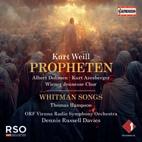
Propheten
ORF Radio-Symphonieorchester Wien · Dennis Russell Davies, conductor CAPRICCIO